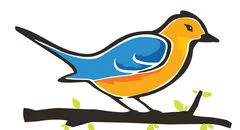Chickens are protected in Key West due to their historical significance, contributing to local culture and tourism, and promoting biodiversity in the area.
The free-roaming chickens of Key West are more than just a quirky tourist attraction – they’re a legally protected part of the island’s cultural heritage. These colorful fowl enjoy special status under local ordinances, with strict penalties for anyone who harms them. But how did wild chickens become such an iconic part of this tropical paradise?

The Surprising History Behind Key West’s Wild Chickens
Key West’s chicken population has roots stretching back centuries. While their exact origins remain debated, most historians agree on several key theories:
Cuban Connection (1800s)
Many chickens descended from birds brought by Cuban immigrants in the 19th century. These settlers relied on chickens for both eggs and meat in the isolated island community.
Spanish Explorer Legacy (1500s)
Some evidence suggests Spanish explorers may have introduced the first chickens as early as the 16th century, using them as a mobile food source during voyages.
Cockfighting Heritage
When Florida banned cockfighting in the 1980s, many fighting roosters were released rather than destroyed. These birds contributed to the current feral population’s genetic diversity.
Unlike typical backyard chickens, Key West’s fowl developed unique survival traits over generations of living wild. Their colorful plumage blends perfectly with tropical foliage, and they’ve become remarkably street-smart.

Legal Protections for Key West Chickens
In 2004, the Key West City Commission passed Ordinance 04-13, which:
- Prohibits harming, killing, or capturing chickens
- Bans feeding chickens in public areas (with fines up to $500)
- Establishes a humane relocation program for nuisance birds
The law recognizes chickens as part of Key West’s “unique historic, cultural and community identity.” Violators face misdemeanor charges – a stark contrast to most places where feral chickens would be considered pests.
Humane Population Control
When chicken numbers grow too high, trained volunteers humanely trap and relocate birds to mainland farms. These chickens often become natural pest control in organic agriculture.
Why Locals Protect Their Feathered Neighbors
The chickens serve multiple important roles in Key West:
| Role | Benefit |
|---|---|
| Tourist Attraction | Visitors love photographing the colorful birds |
| Cultural Symbol | Featured in local art, festivals, and folklore |
| Natural Pest Control | They eat insects, reducing need for pesticides |
| Living History | Connection to Key West’s multicultural past |
As described in Casual Monday Charters’ guide, the chickens have become as much a part of Key West’s identity as its famous sunsets.
Ongoing Chicken Controversies
Not all residents embrace the chickens equally. Common complaints include:
- Early morning crowing (roosters don’t just crow at dawn!)
- Scratching in gardens and landscaping
- Droppings on sidewalks and porches
- Occasional aggressive behavior during mating season
The city balances these concerns through its trap-and-relocate program while maintaining the birds’ protected status. Interestingly, the chickens have adapted remarkably well to urban life – they’ve learned to look both ways before crossing streets and often beg for food at outdoor cafes.
Key West Chicken Fun Facts
- The local high school mascot is the “Fighting Conch” – but many think a chicken would be more appropriate
- Annual “Chicken Fest” celebrates the birds with costumes and crowing contests
- Some chickens have become local celebrities with names like “Colonel Sanders” and “Henrietta”
- Their diverse plumage results from generations of mixed breeding between domestic and feral birds
Next time you visit Key West, listen for the distinctive “cock-a-doodle-doo” that echoes through the palm trees – it’s the sound of living history protected by law.
